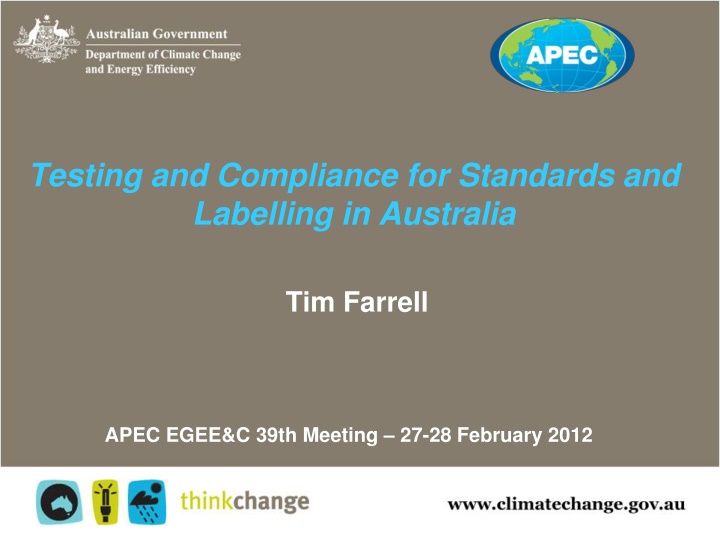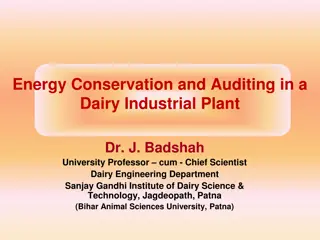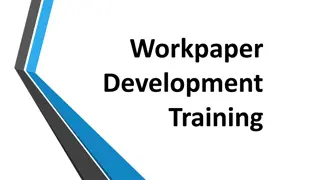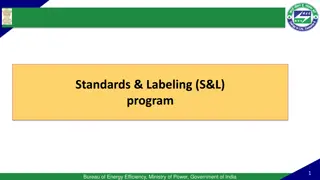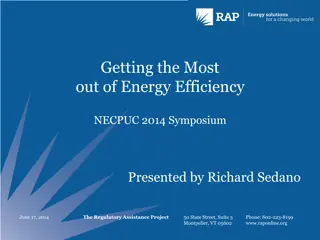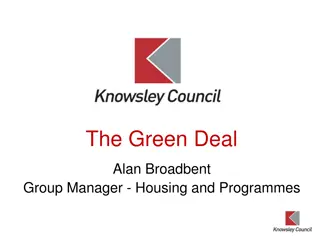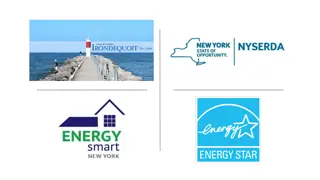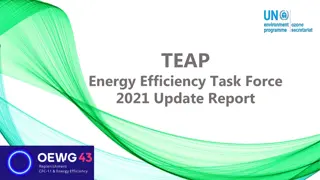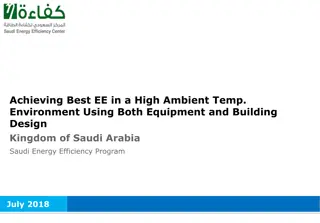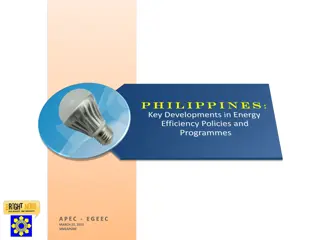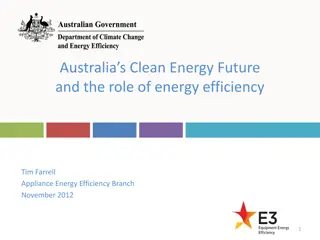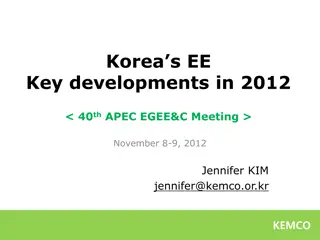Australia's Equipment Energy Efficiency (E3) Program and Compliance Measures
Australia's Equipment Energy Efficiency Program (E3) focuses on regulating energy efficiency in various sectors through mandatory and voluntary programs. The program includes verification testing, market surveillance, and education. To address compliance issues, enforcement is carried out by state regulators and the ACCC. The E3 Compliance Program negotiates settlements and ensures adherence to national legislation. Monitoring, verification, and enforcement activities play a crucial role in improving compliance rates and addressing failures in regulated products.
Download Presentation

Please find below an Image/Link to download the presentation.
The content on the website is provided AS IS for your information and personal use only. It may not be sold, licensed, or shared on other websites without obtaining consent from the author.If you encounter any issues during the download, it is possible that the publisher has removed the file from their server.
You are allowed to download the files provided on this website for personal or commercial use, subject to the condition that they are used lawfully. All files are the property of their respective owners.
The content on the website is provided AS IS for your information and personal use only. It may not be sold, licensed, or shared on other websites without obtaining consent from the author.
E N D
Presentation Transcript
Testing and Compliance for Standards and Labelling in Australia Tim Farrell APEC EGEE&C 39th Meeting 27-28 February 2012
Australias Equipment Energy Efficiency (E3) Program Joint Australian and New Zealand governments program 22 regulated products across the residential, commercial and industrial sectors Additional 2 products covered under voluntary programs or a code of conduct (swimming pool pumps & complex set-top boxes) All regulated products must be registered
E3 Compliance Program E3 undertakes verification testing, market surveillance and education In Australia, currently state regulators provide enforcement the ACCC takes action in severe cases. E3 negotiates settlements including payments to consumers National legislation (GEMS) is proposed for 2012 and will replace the various state/territory based legislation in Australia
MV&E activities in Australia MV&E unit within appliance energy efficiency team 3 staff Contracts with accredited laboratories to do verification tests - >1,000 from 1991 to 2010 2011-2012 expect to test over 400 models targeted toward products at higher risk of failure Contract with market surveillance team (12 staff) to do store/ internet/ advertising checks on labelling Forums, newsletters, outreach to highlight obligations and provide feedback
Results of 1000 checktests 60% Stage 1 Tests 50% Stage 2 Tests RATE OF FAILURE (%) 40% 30% 20% 10% 0%
What are the issues? Making the most effective use of public funds maximising cost effectiveness through better targeting Maximising compliance by raising the risk of detection ensure suppliers notified quickly and results are published naming and shaming is quite effective, but some well publicised enforcement goes a long way! Ensure processes are fair, transparent and followed strictly needed to support any enforcement clarify staff responsibilities, provide training and infrastructure Facilitate compliance ensure suppliers know what they must do make it easy for them to comply
What are the issues? (cont..) Compliance activity is harder for some products eg commercial and industrial innovative ways to reach this sector needed Increase of internet sales need to focus monitoring efforts on this sector Test laboratories lack of appropriately accredited test facilities for some methodologies/ products limits the number and speed in which check tests can be conducted
What could help? Closer links/ coordination between regulators in different countries Raise the threat of detection through better intelligence/ information sharing Share approaches i.e. undertaking risk assessments, reaching sectors where compliance harder Opportunities to transfer experiences and approaches between programs Work on developing a common language
What could help? (cont..) Better communication with overseas stakeholders Test facilities, trade and industry groups, individual suppliers Further round robin testing between Australian and international test laboratories in APEC region Encourage more competitor complaints (with supporting evidence)
